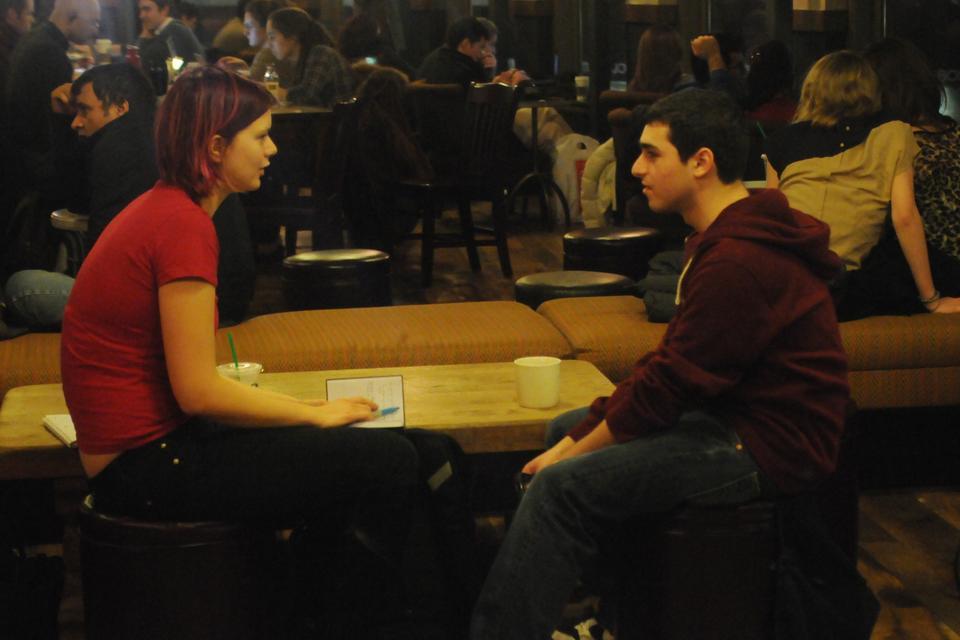
Putting the Date in Datamatch
Though I found it entertaining to answer questions about David J. Malan ’99 and YouTube memes, meeting someone—the alleged purpose of Datamatch—proved tedious and demoralizing. And I wasn’t looking for “the one,” just someone to share a cup of coffee with and say "hi" to in the Yard.
After three hours of texting, emailing, calling, Facebook friending, and haranguing every single one of my 11 matches, I finally made a connection. We set a date. We set a time. Yet, when I arrived upstairs at Starbucks, I realized that, unlike the guys I’d met online, I had no idea which boy in the Harvard hoodie was my 90.45 percent.
Luckily, he found me. I turned to meet Jeremy in his Crimson sweatshirt and felt a tingle of hope when I shook his hand. Maybe this was the best friend I’d been looking for—the man to share Brain Break with in between visits from my long-distance boyfriend. You see, I wasn’t using Datamatch for love, I simply wanted friendship.
I offered to buy him a drink, but Jeremy doesn’t drink coffee. Jeremy just likes the atmosphere. A freshman from my math class was playing guitar in the corner with her pink running shoes kicked off her feet. Middle-aged tourists and students with laptops occupied all of the tables. We sat awkwardly on cushions while beginning to get to know each other, and attempted to understand our respective journeys to this fateful Friday night.
Through a series of interrogation-style questioning, I learned that Jeremy studies "normal pre-med stuff," although he’s not sure why. He comes from a private school in New Jersey, where he ran track. Despite my intimidating conversational style, he seemed to be charming and sociable, the type of guy I’d happily chat with while drinking vodka and diet-coke at an illicit freshman party.
Like most of his entryway in Holworthy, however, Jeremy only took Datamatch "for shits and giggles." He enjoyed it, but the subtle eroticism of computer-aided dating eluded him. Thus far, none of his friends have contacted, hooked up with, or married their matches.
Though many of the Datamatch questions were undeniably amusing, I expected a high match rating to predict a profound connection. I knew from my experiences on OkCupid that a 70 percent match got annoying after 15 minutes, that an 80 percent match meant less talking and more making out, and that my Mr. 99 percent actually rounded up to "the one."
I’m sure Jeremy and I had a lot in common—he was my 90.45 percent after all—but as the conversation progressed, I couldn’t see why. For every sentence we exchanged, there were two awkward silences. We had nothing to talk about. Maybe I should have Google stalked him first. I can only make so much small talk about Holworthy and his email address. And the Datamatch survey had vanished from the internet, leaving me with no way to ask him which Charlie Sheen quote describes his sex life.
Perhaps this highlights the biggest fault of Datamatch as a love engine—when two matches meet, neither knows what the other wants. For all of the problems of online dating, the clarity of knowing that a coffee date is a date-date is refreshing. The hassle of looking for love or friendship in a list of email addresses, at least for Jeremy and me, wasn’t worth it. It looks like more solo Brain Breaks for some of us until next Feb. 14.


